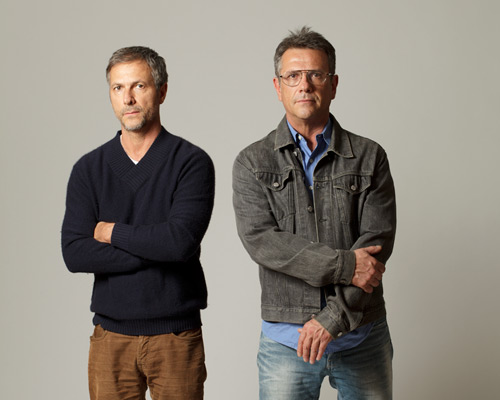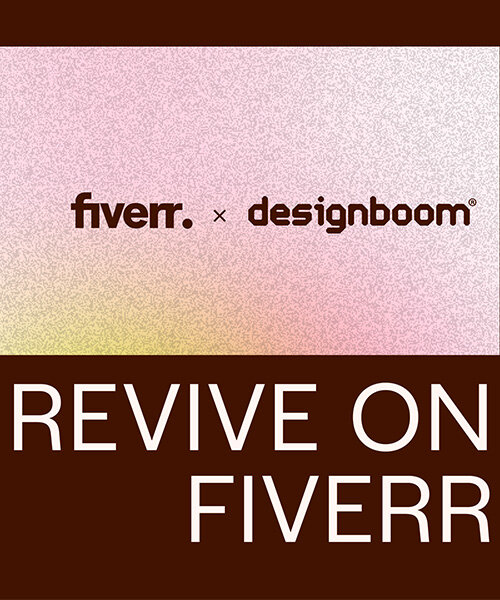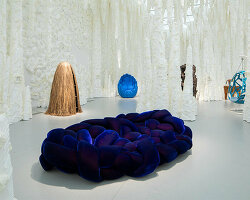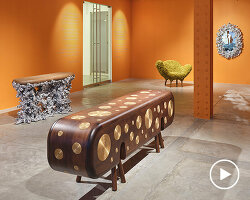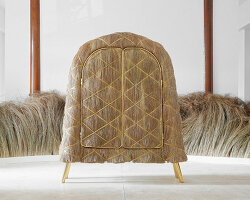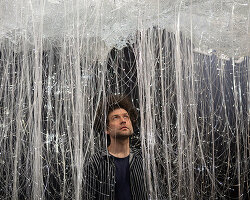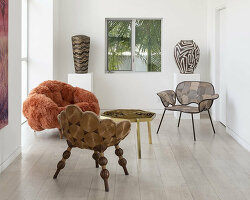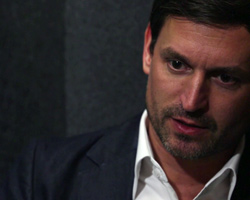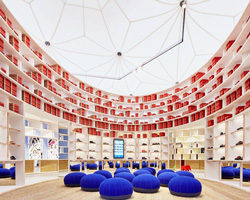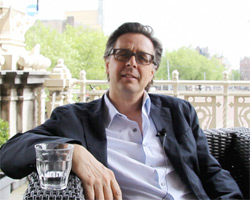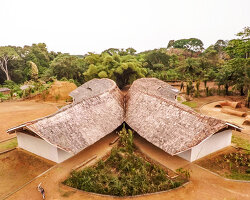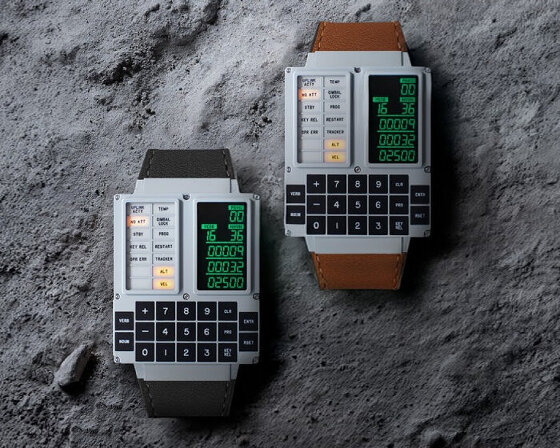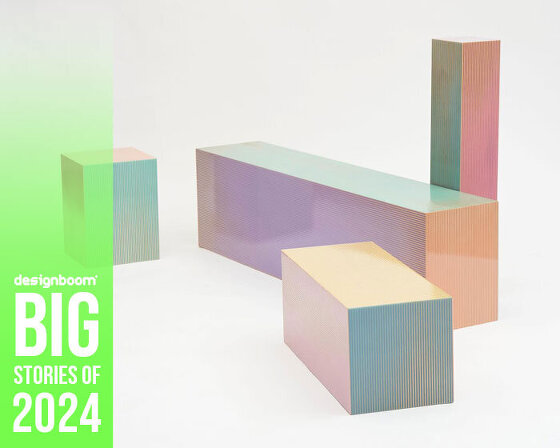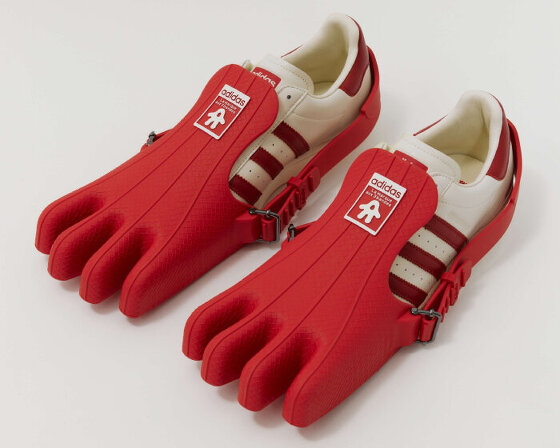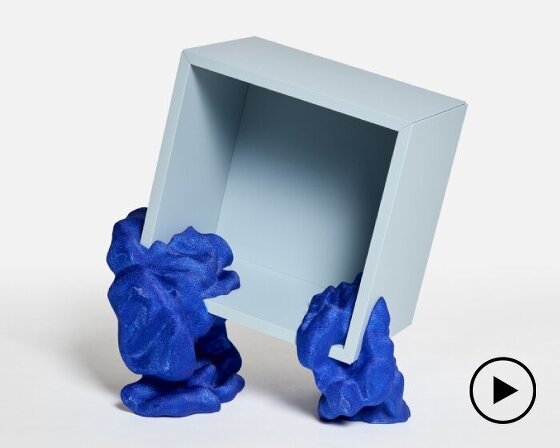interview with brazilian designers fernando + humberto campana
image courtesy of estudio campana, photo by fernando laszlo
since 1983, brothers fernando and humberto campana have been working together, designing by doing, making and watching craftsmen in action. the brazilian creatives’ practice is deeply embedded in the materials that they use, their chosen mediums ultimately dictating how each of their projects will evolve through casual construction. the campanas have collaborated extensively with international brands across the globe including alessi, baccarat, edra, lasvit and louis vuitton applying their handcrafted techniques and humble materials to new contexts through transformation and reinvention. designboom gets personal with the campana brothers finding out what has shaped their design principles and philosophies, which methods and materials they have enjoyed working with most, and what they believe their strongest skill is.
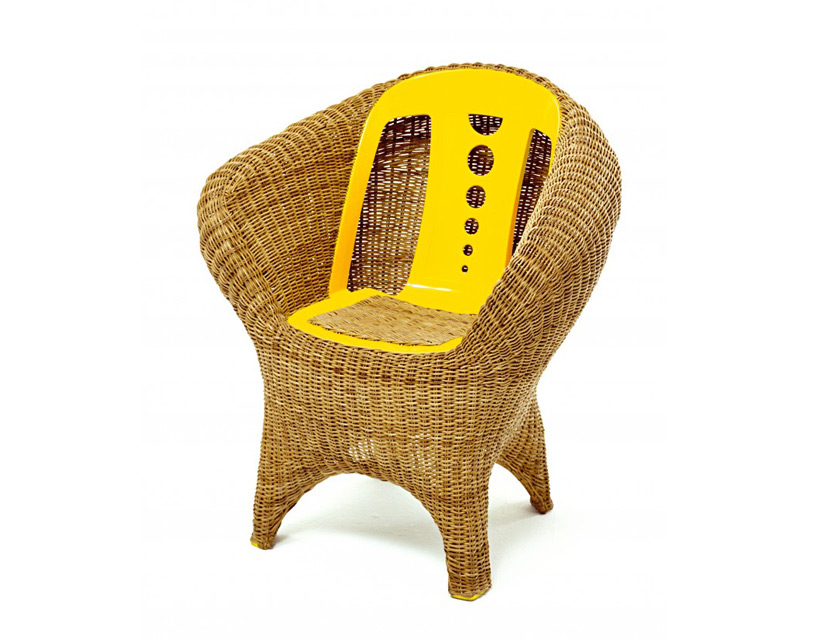
café chair from ‘transplastic’ collection, 2006
chair made out of wicker woven structure embracing a colored plastic chair
unlimited edition
H90 x L95 x W80 cm, 12 kg
image © fernando laszlo
designboom: what originally made you want to go into the field of design?
humberto campana: after graduating from law school, I lived in a small town in the state of bahia. I came back to sao paulo in the late 70s and began to attend iron and terra cotta sculpture workshops and jewelry classes. then I set up a small studio of handcraft products and began to sell baskets and mirrors framed with shells. I invited fernando to help me on a busy holiday season order.
fernando campana: I was only called to make ‘deliveries’, and I soon realized that there was much more to achieve with my brother. our beginning was not planned at all. I graduated in architecture and at the time I was working at the XVII sao paulo art biennial where i had the chance to get to know the work of artists such as keith harring, anish kapoor and daniel buren.
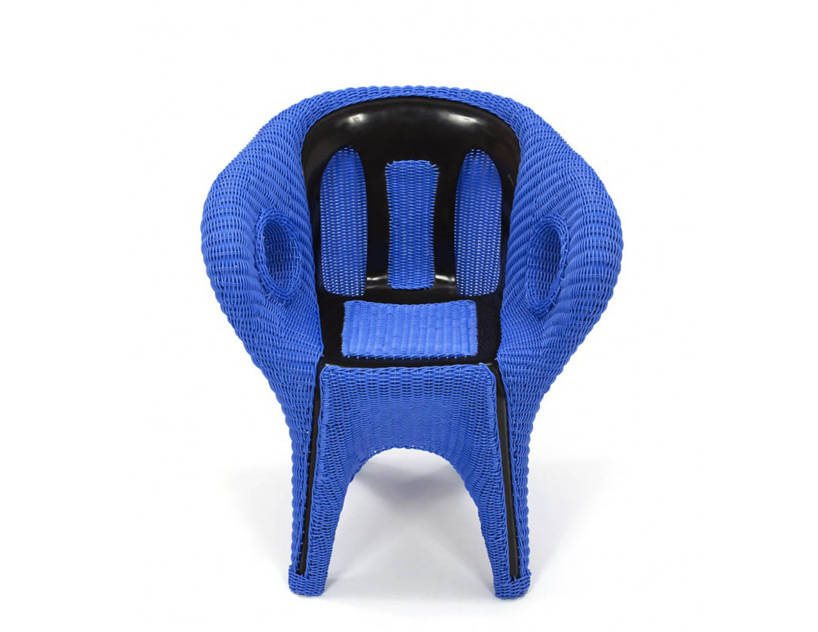
café chair from ‘transplastic’ collection, 2006
chair made out of wicker woven structure embracing a colored plastic chair
unlimited edition
H90 x L75 x W75 cm, 12 kg
image © fernando laszlo
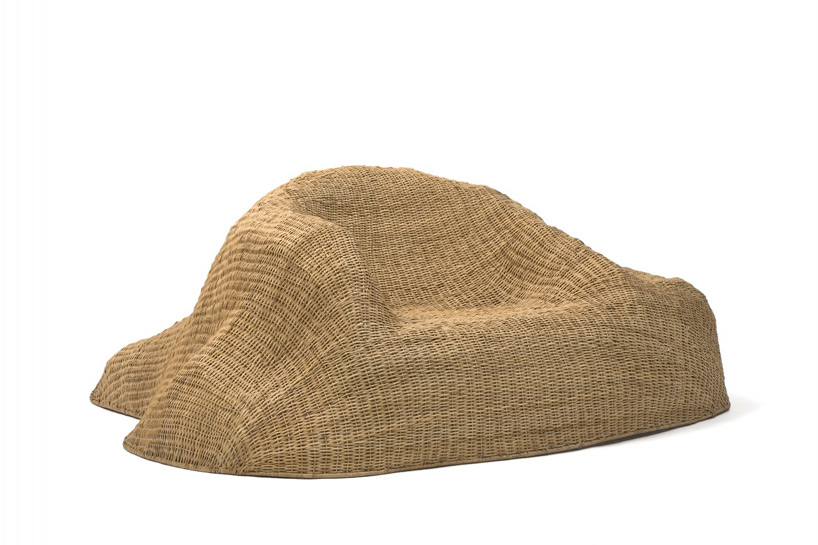
wicker armchair, 2006
armchair made out of wicker woven structure in the shape of a sofa and side table
H65 x L185 x W179 cm, 25 kg
image © fernando laszlo
DB: what particular aspects of your background and upbringing have shaped your design principles and philosophies?
FC + HC: we lived a childhood surrounded by nature and that’s what brought us to design. when we were kids we built ourselves a personal universe and that’s what made us creative. our father was an agricultural engineer and our mother was a primary school teacher. we lived in a house with an unpaved basement and a vast backyard, surrounded by fruit trees and streams leading to waterfalls and lakes. we would go to the cinema in the evening and during the day we would have fun in the nature around the farm. we remember that we used to play at recreating the settings of films and making tree-houses using bamboo and other plants. there were many bamboo plantations in the area.
DB: who / what has been the biggest influence on your work to date?
FC + HC: brazilian multiculturalism nourishes our creations. but we were also influenced by the work of lina bo bardi and oscar niemeyer. we really appreciate their constant search to find ways to look at brazil from new angles.
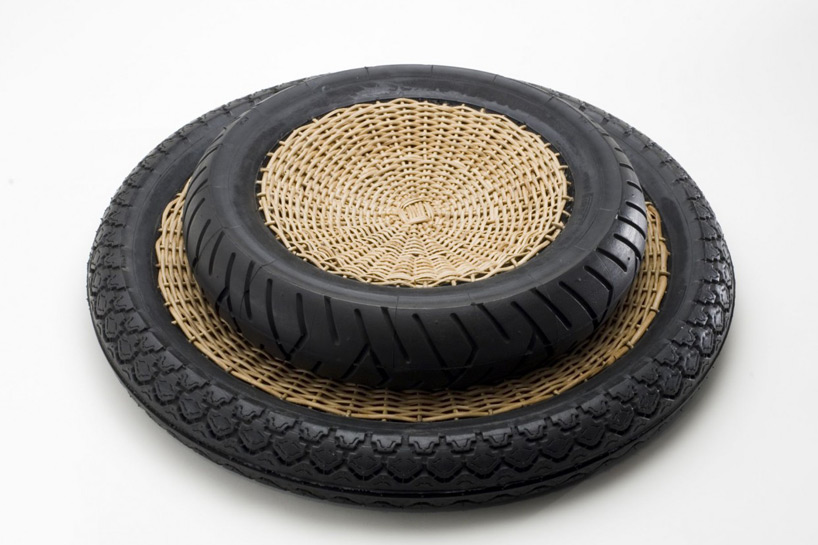
‘transneomatic’ collection for artecnica, 2009
‘transneomatic’ centrepiece made out of wicker and tire
H10 x D42 cm
image © artecnica
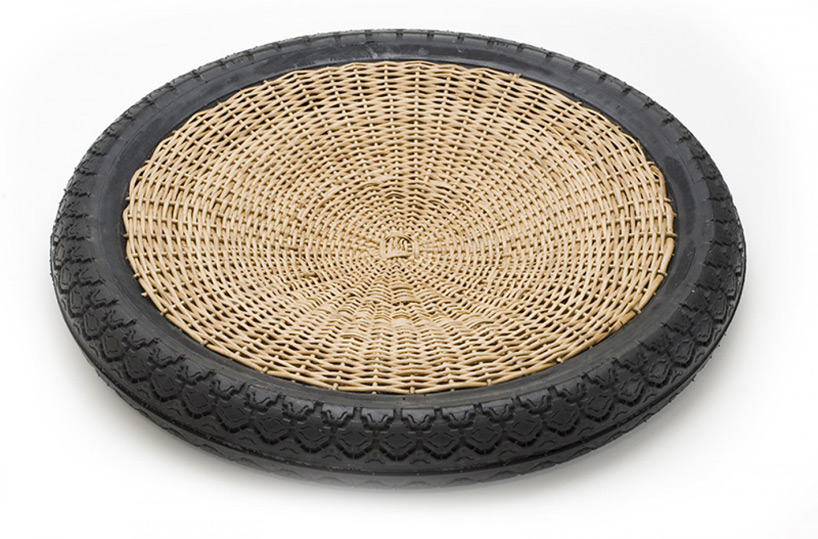
‘transneomatic’ collection for artecnica, 2009
‘transneomatic’ centrepiece made out of wicker and tire
H7.5 x D57 cm
image © artecnica
DB: overall, what would you say is your studio’s strongest asset and how have you developed that skill over time?
FC + HC: we have kept the same idea since the beginning. we still have a small studio in sao paulo with a tight-knit crew of 12 people. we still have the same process of creating the prototypes here and we still work with artisans to rescue endangered popular traditions. we want to have the possibility to follow the production closely and to maintain the uniqueness of an artwork which is conceived with care and hard work.
DB: what production techniques and materials have you enjoyed working with most? which ones would you like to explore further?
FC + HC: we really like to work with natural fibers such as bamboo, capacho (natural coconut fiber rug) and wicker. we enjoy exploring the different techniques we can use to work with these materials. for example the process of weaving that we have used recurrently and is featured in the pieces of our racket and detonado collections.
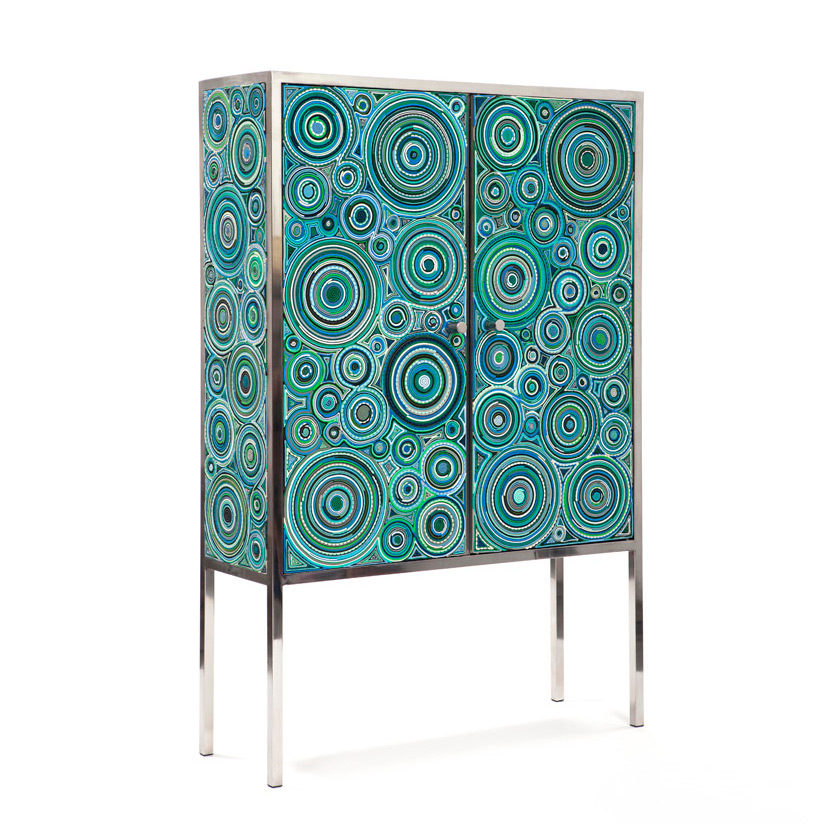
‘sushi cabinet’ from the ‘sushi collection’, 2013
cabinet made out of sushi rolls handcrafted in carpet, rubber, EVA, fabric and anti-slip mat covering stainless-steel structure
H120 x L40 x W180 cm, 50 kg
limited edition of 8 pieces + 4 AP
image © fernando laszlo
see more about this project on designboom here
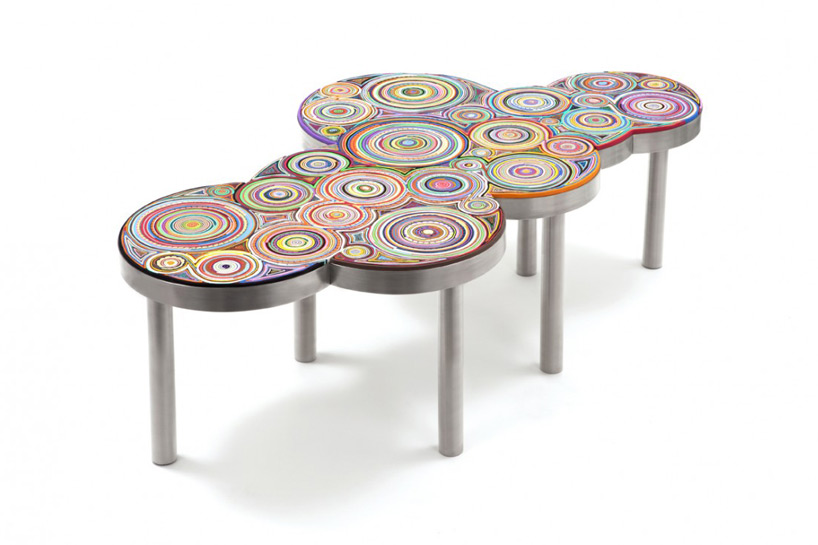
‘harumaki bench’ from the ‘sushi’ collection, 2007
bench made out of sushi rolls handcrafted in carpet, rubber, EVA, fabric and anti-slip mat covering wooden structure with stainless steel feet
H45 x L120 x W60 cm, 30 kg
limited edition of 25 pieces + 5 AP
image © fernando laszlo
DB: what do you consider to be the most interesting developments in the field of design today, and why?
FC + HC: the 3-D printing and its time and environmentally conscious sides as it allows us to cut down on the back and forth exchanges with our counterparts and the waste of raw materials. when you want to build a chair or a table there is a whole thinking process behind: how will the piece be? what dimensions will it have? how heavy is the wood? does the wood come from sustainable and legal sources? i think today design goes far beyond the functionality or the form. it is a political tool.
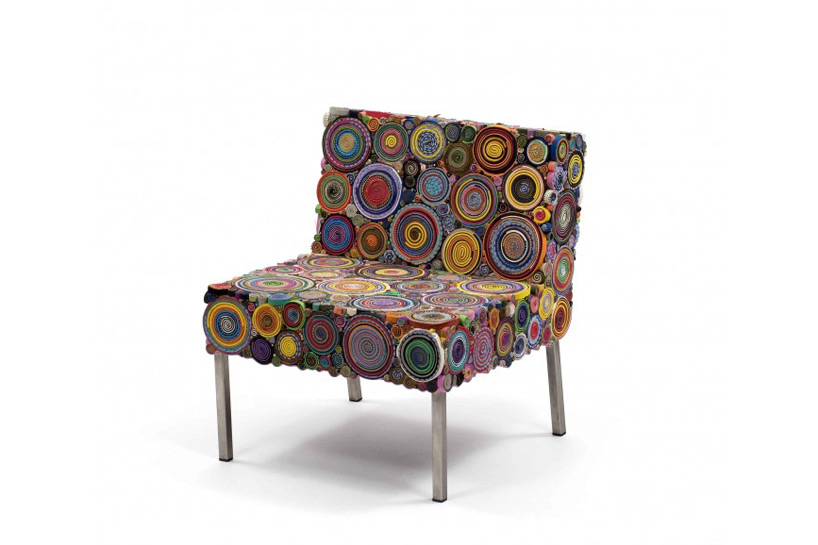
‘sonia diniz chair’ from the ‘sushi’ collection, 2002
bench made out of sushi rolls handcrafted in carpet, rubber, EVA, fabric and anti-slip mat covering wooden structure with stainless steel feet
H80 x L65 x W65 cm, 25 kg
limited edition of 35 pieces + 5 AP
image © fernando laszlo
DB: how – and to what extent – do other creative fields influence your design work?
FC + HC: sometimes we touch design, sometimes we touch art, architecture or interiors. we build bridges between disciplines. what matters is to be free to create without labels.
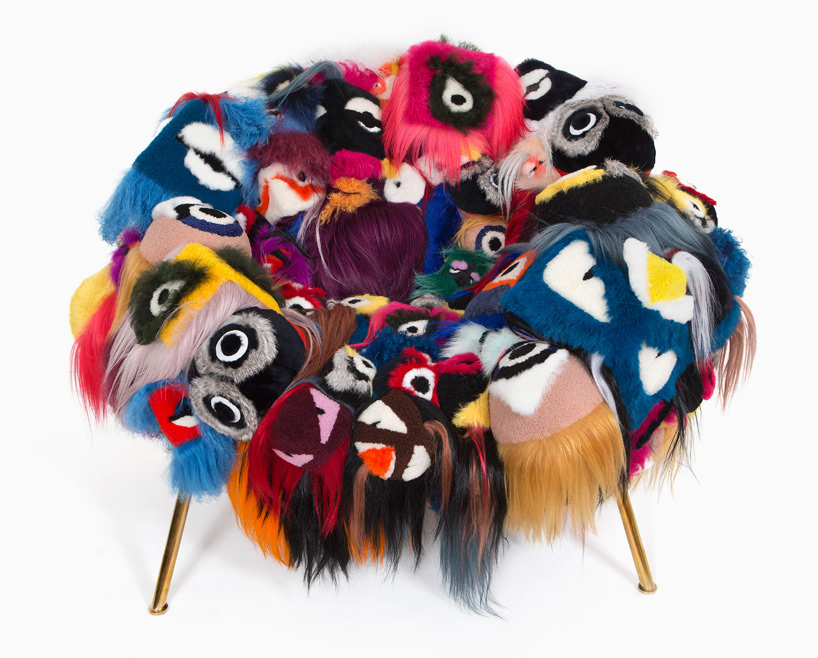
‘the armchair of thousand eyes’ realized in collaboration with galleria o. and fendi
gilded brass, fendi ‘bag bugs’ in shearling, kidassia, mongolia, rabbit fur
W 140 x 115 x H 88 cm (approx.)
see more about this project on designboom here
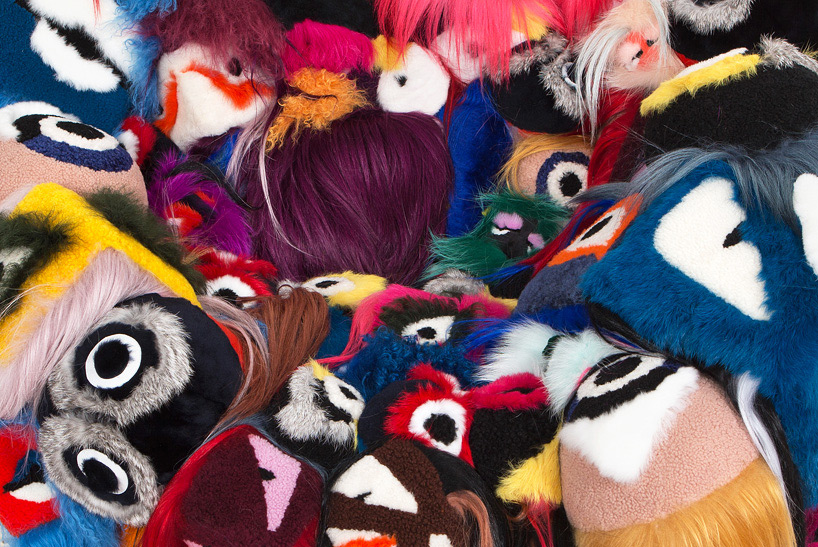
detail of ‘the armchair of thousand eyes’
DB: who are the designers working today that you most admire? and those from the past?
FC + HC: from the past we admire shiro kuramata, achille castiglioni and ettore sottsass. nowadays, we admire andrea branzi, ingo maurer, joris laarman and maarten baas. from brazil we love the work of oscar niemeyer and lina bo bardi. but design is blooming in brazil and there are quite a few young designers that have developed their own and unique ways such as rodrigo almeida, tete knecht, carol gay, mana bernardes, zaninini de zanine and leo capote.
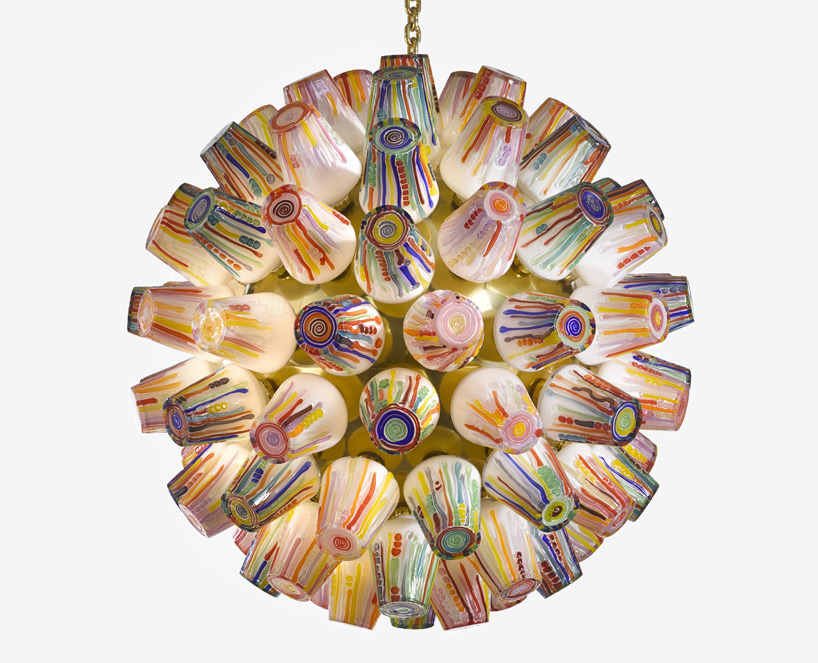
‘candy collection’, 2015 for lasvit
sphere chandelier made out of glass and polished brass structure
D1080 mm, 200 kg
image © lasvit
see more about this project on designboom here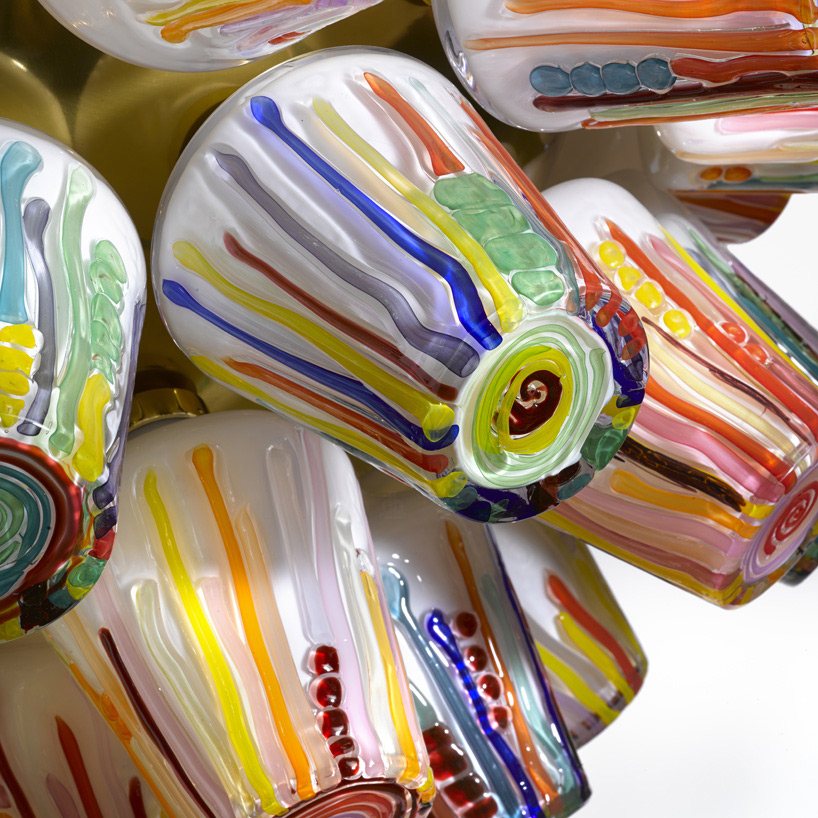
detail of ‘candy collection’ sphere chandelier
image © lasvit
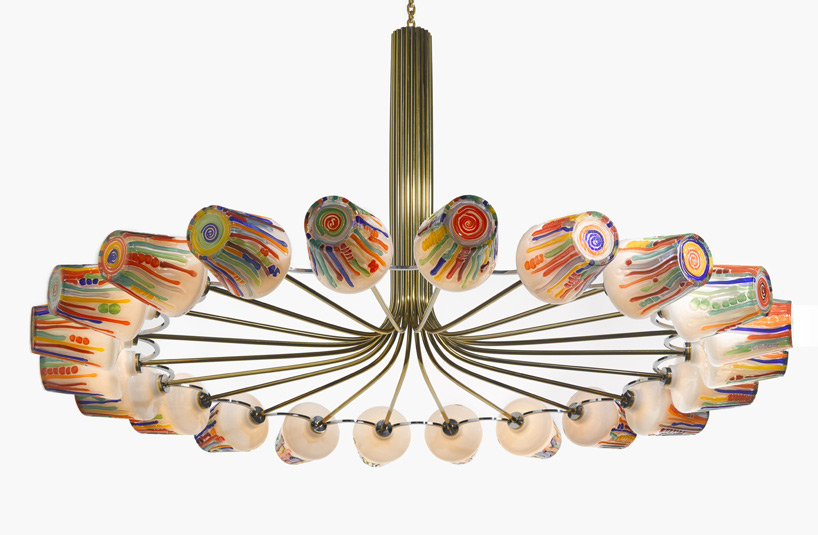
‘candy collection’, 2015 for lasvit
ring chandelier made out of glass and polished brass structure
H800 x D1500 mm, 80 kg
image © lasvit
DB: how do you try to keep your ideas fresh?
FC + HC: brazil is a very important source of inspiration for us. brazilian multiculturalism nourishes our creations. translating brazilian identity into design is one of our most important challenges but we actually find inspiration everywhere we go. mainly in life’s magnitude, in nature and in craft traditions that are disappearing.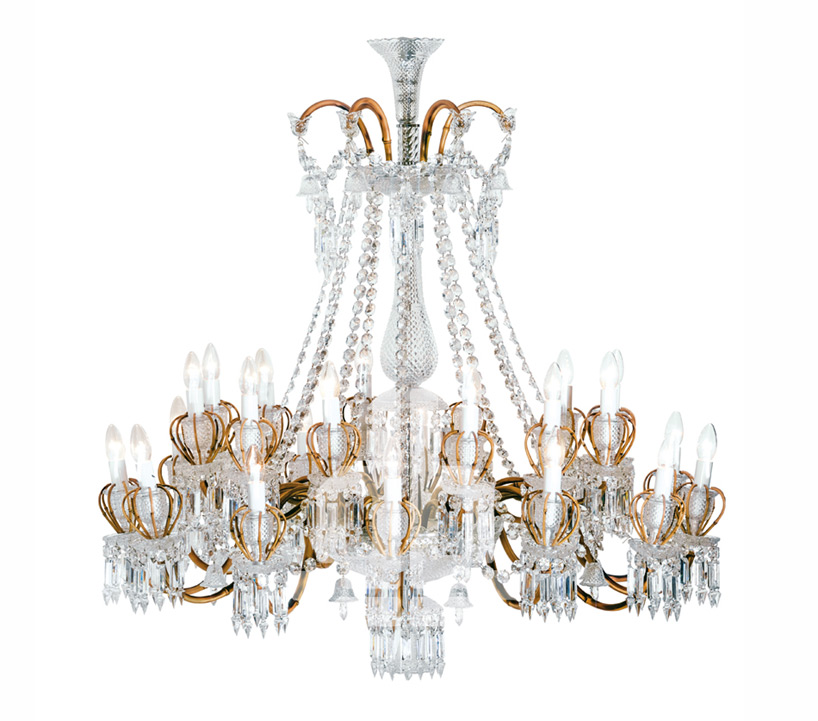
‘fusion collection’, 2013 for baccarat
‘zénith alvorada chandelier’ made of of bamboo and reed
unlimited edition
image © baccarat
see more about this project on designboom here
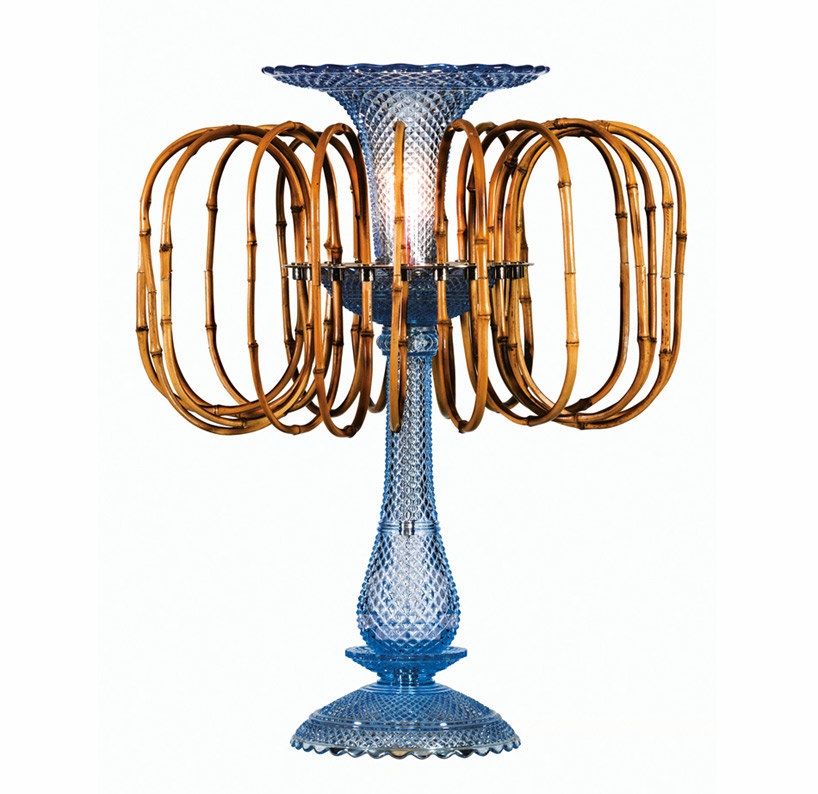
‘fusion collection’, 2013 for baccarat
‘amuleto’ table lamp made out of aquamarine crystal and bamboo
unlimited edition
image © baccarat
DB: to date, what project has given you the most satisfaction?
FC + HC: maybe the café campana at musée d’orsay in paris.
DB: can you tell us about any projects you are currently working on that you are especially excited about?
FC + HC: we’re working on a furniture collection made out of the skin of an amazonian fish called pirarucú. the fishermen of the region work with an NGO to raise this endangered specie in sustainable farms. we’re very happy to work with this NGO as it provides fair-wage job opportunities for the local community improving their income and the economic dynamics of the region while avoiding rural exodus.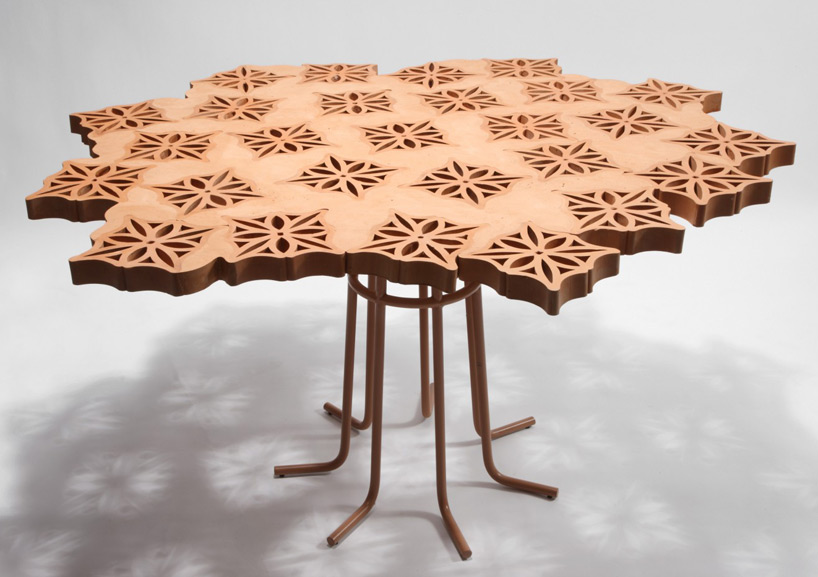
table from cobogó collection, 2009
see more about this project on designboom here
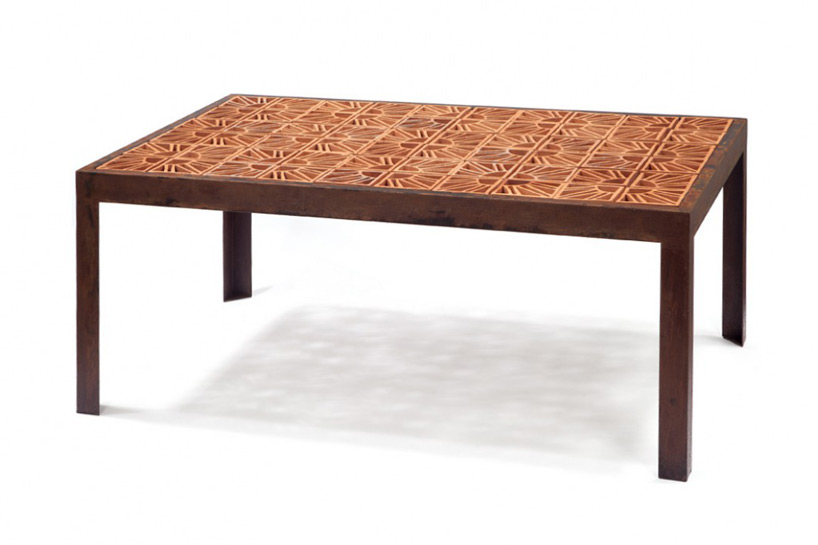
table from cobogó collection, 2009
DB: what do you know now that you wish you knew when you were 21?
HC: I wish I hadn’t graduated in law.
FC: I wish I had known that at 21 I wanted to be 30.
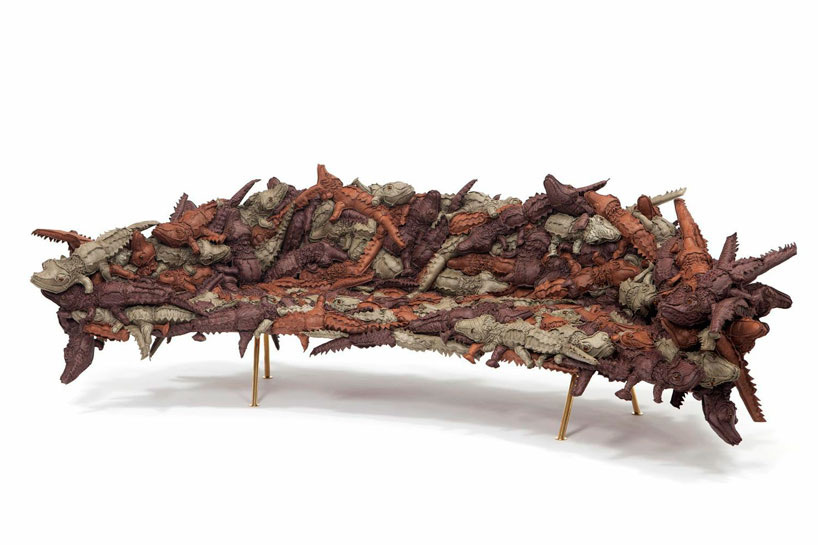
‘alligator banquet chair’,
image © marcos cimardi
see more about this project on designboom here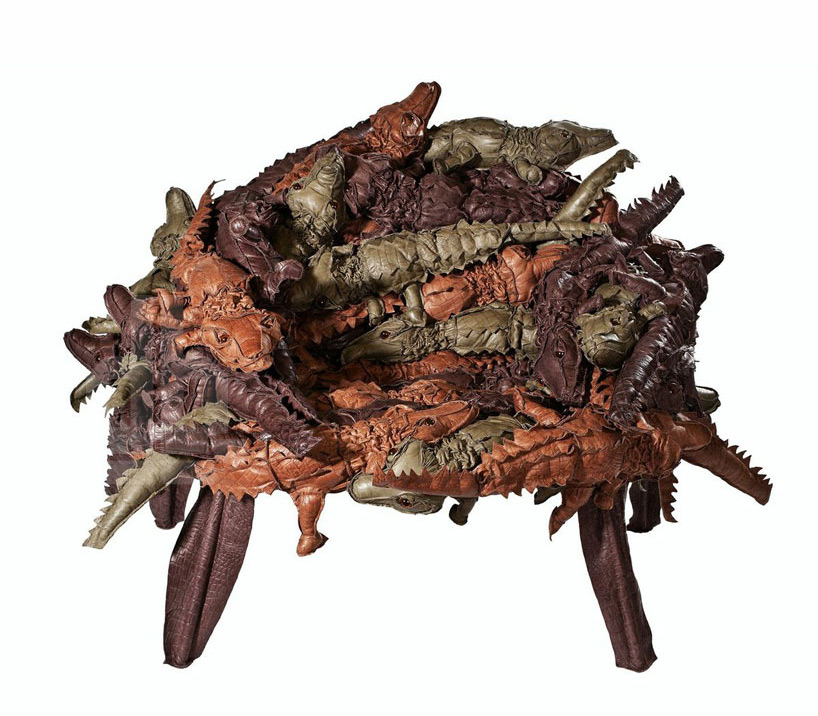
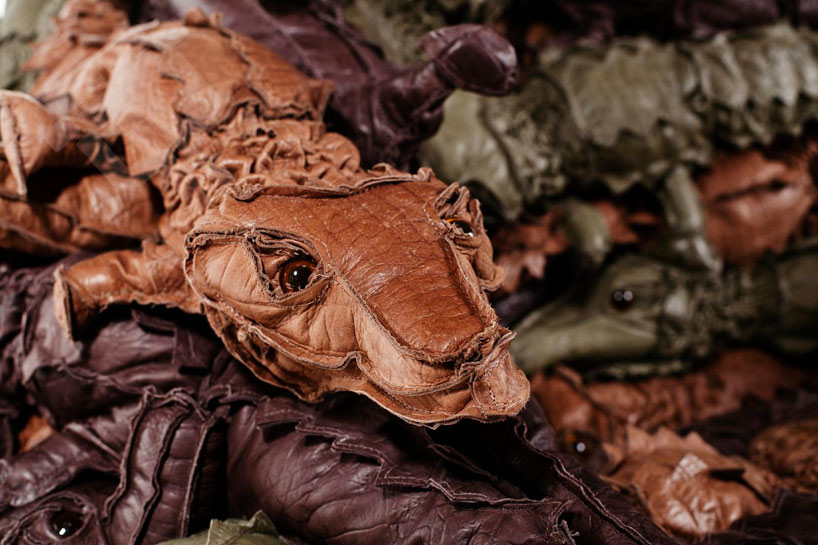
DB: what is your motto?
FC + HC: don’t follow trends. 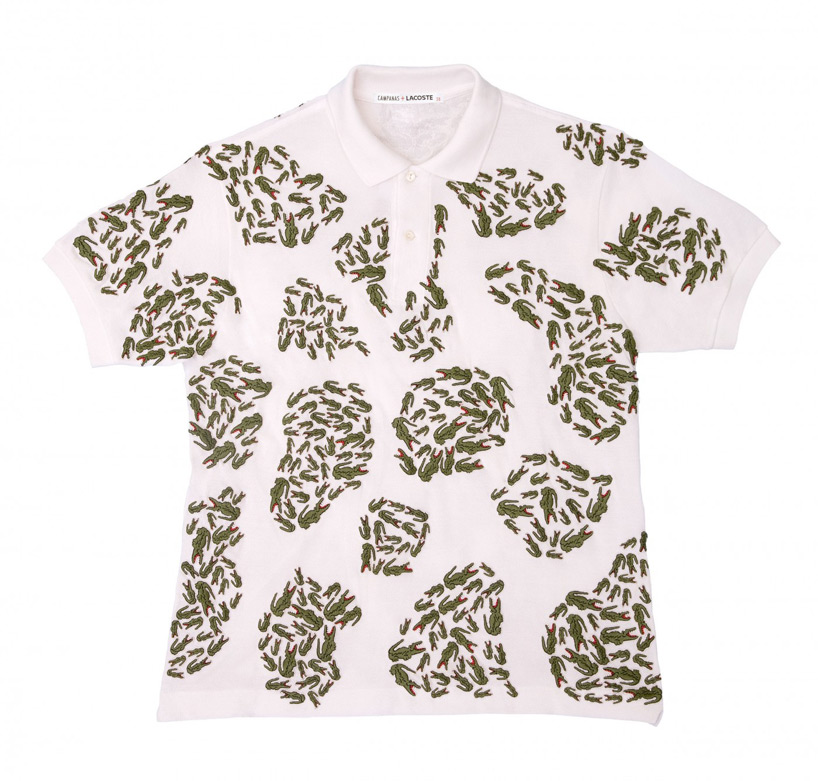
lacoste polo limited edition, 2009
see more about this project on designboom here 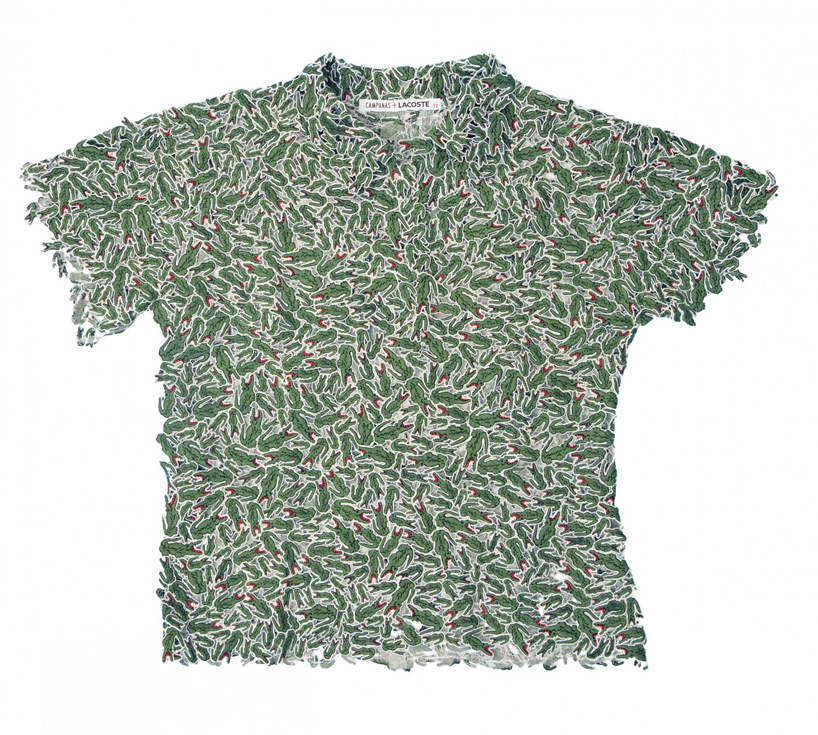
lacoste polo limited edition, 2009

fernando + humberto campana were speakers at the 2015 WHAT DESIGN CAN DO! conference — an international platform about the power of design, promoting design as a catalyst of change and renewal and a way of addressing the societal questions of our time. formed in 2011 by a group of designers from various fields, it aims at showcasing best practices and visions, raising discussions and facilitating collaboration between disciplines, raising awareness among the public for the potential of creativity. at the same time, WHAT DESIGN CAN DO! calls on designers to take responsibility and consider how their work can impact the wider society.
